Recipe for High-Impact Research

In this blog published by IES, the Edunomics Lab team shares lessons learned about making research more useful for practitioners, including designing visualizations and other tools around user needs to make data accessible, actionable, and impactful.
A Guide for SEA-led Resource Allocation Reviews
Resource allocation reviews (RARs) in districts that serve low-performing schools offer a new opportunity to examine the connection between resource allocation and academic outcomes. We’ve created guidance documents, templates, and tips to help SEAs prepare for and conduct RARs.
Districts face deep financial pain in the next two years. Decisions made this spring will determine how it all plays out.

Marguerite Roza suggests keeping an eye on six critical issues during this spring’s district budget discussions, as decisions made there will determine what happens on teacher layoffs, school closings, program cuts, and more.
What Goes Wrong When Some School Board Members Don’t Understand District Finances?
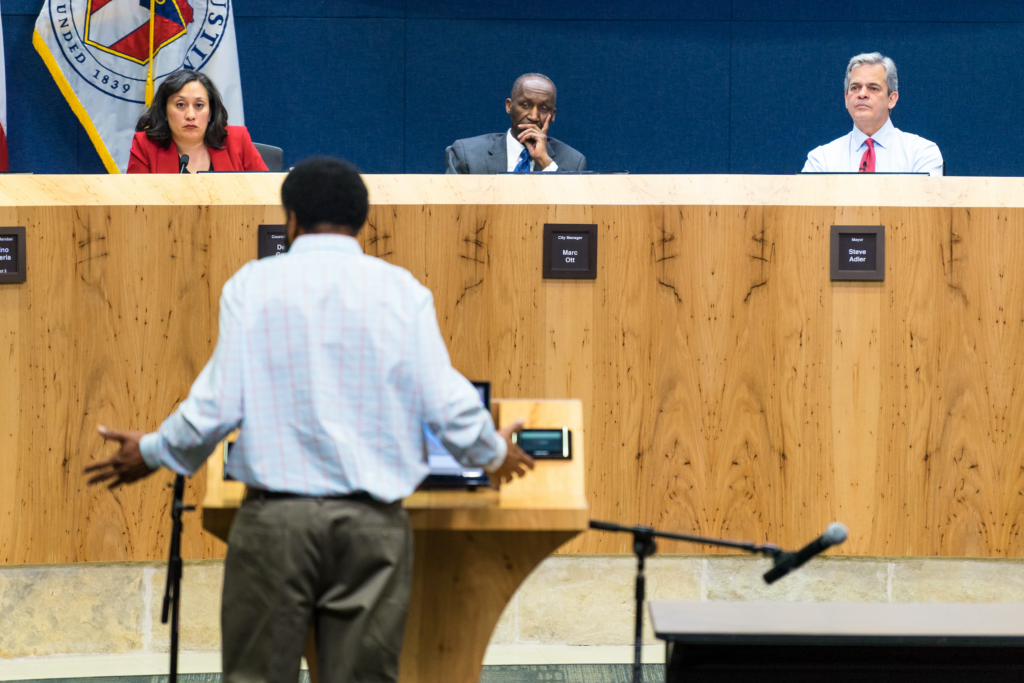
A lack of school board financial expertise is especially problematic as members wrestle with the pressures of enrollment declines, inflation, and the temporary nature of federal relief funds, writes Marguerite Roza in Forbes.
Communication Template for Principals on Use of Federal Relief Funds

Based on messaging research on how district staff, principals, teachers, and parents engage with and react to information about school finance, this template will help principals engage their community in a way that cultivates trust and helps make the most of the federal relief dollars.
Financial Leadership: Meeting This Moment

This article in School Business Affairs magazine illuminates the critical need to develop district leaders’ strategic finance skills.
The Big Bet on Adding Staff to Improve Schools Is Breaking the Bank

By going all-in on staffing, we’ve crowded out other potential investments that can positively impact student learning. In this paper, Marguerite Roza writes that competing strategies should be viewed through the lens of which can do the most for students with the limited dollars at hand.
Engaging principals in school-level financial data to boost student achievement
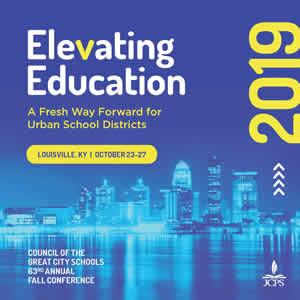
During the Council of Great City School’s fall conference in 2019, Cleveland Metropolitan School District, and Edunomics Lab shared insights using school-by-schools spending data and a framework for engaging school leaders in leveraging dollars for the greatest outcomes possible.
The “Would You Rather?” Test
Education spending always involves choices, and smart choices require understanding value for the dollar. This paper uses the “would you rather” exercise to explore tradeoffs in school spending and think through the value of various cost-equivalent investments.
Training School Leaders to Spend Wisely

This article in Education Next shines a light on the pressing need to better support district and school leaders in their work on the spending side of the equation.
With New Data, School Finance Is Coming Out of the Dark Ages

In this blog and podcast, Marguerite Roza explains how a sleeper provision in the Every Student Succeeds Act (ESSA) will serve up a motherlode of new school-level financial data, offering an unprecedented opportunity to be better equipped to tackle some of education’s most pressing issues.
Productivity Improvements Paper Series

These five Rapid Response briefs model the costs of productivity improvements in K-12 education, including changes in staffing ratios, the impact of late-career teacher pay raises on pension debt, and paying the best teachers more to teach more students.
Productivity is sometimes seen as a dirty word in education
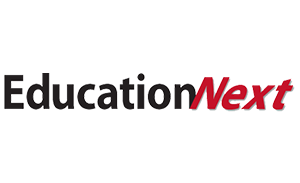
This article explores how school systems can improve productivity even when so much of what matters—the human variables and relationships in student learning—can’t be centrally managed and scaled across schools.
The Productivity of Rural Schools

Remote rural districts are often more expensive and yield lower student outcomes than urban and suburban districts. Yet some rural districts generate higher-than-expected learning results without proportionately higher spending. Based on interviews with leaders in 30 rural remote districts, Marguerite Roza identifies six factors that make some districts “productivity superstars.”
The Smart Money: Designing a school budget to get the most for your school dollar
In this hands-on workshop presented at NAIS national conference in March 2017 school leaders dove into the math of school resource allocation. Dr. Roza shared innovative financial strategies and how leaders could apply the concepts to their own school context.
Highly Productive Rural Districts: What is the Secret Sauce?

In this paper we identify some common themes that makes some remote rural districts “productivity superstars” and describe steps states can take to encourage and support district productivity.
Paying the Best Teachers More to Teach More Students

In this analysis we find how allowing our best teachers to teach more students in lieu of hiring additional staff could offer significant teacher bonuses. Findings are modeled state-by-state.
Webinar: Training Principals for Budgeting at the School Level

In this webinar and presentation, we share seven key steps for principals to customize their use of resources based on student outcomes goals and needs. This includes concrete budget strategies and hands-on exercises to help principals understand and weigh cost and tradeoff scenarios.
Taking Off the Heat

On January 29, 2014 Marguerite Roza shared risks and rewards that emerge when districts “decentralize” engagement around financial decisions to the school level with Portfolio School District Network members in Houston, TX.
The Case Against High School Sports

In this article published by The Atlantic, author Amanda Ripley draws on Marguerite Roza’s research as she describes the role of high school sports in the American education system, how current resource allocations favor sports over academics, and consequences as American students fall behind in international rankings.
How Current Education Governance Distorts Financial Decisionmaking
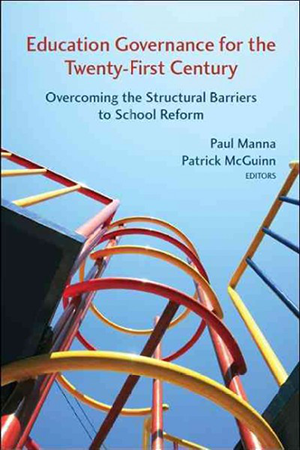
In this chapter, Roza assesses the strengths and weaknesses of what remains of the old in education governance, scrutinizes how traditional governance forms are changing, and suggests how governing arrangements might be further altered to produce better educational outcomes for children.
Student-Based Allocation to Enable School Choice

This brief explains the need for student-based allocation to enable student choice and portable funding across schools within districts.
Innovating Toward Sustainability: How Computer Labs Can Enable New Staffing Structures, and New Savings

Using wage and staffing data from states, authors project the financial and staffing implications of one innovative school model (the Rocketship lab rotation) to highlight potential impacts on the schooling workforce and total per-student spending.
The Opportunity Cost of Smaller Classes: A State-By-State Spending Analysis

This brief provides a state-by-state context by computing the dollars at stake in marginally raising the number of students per class.
Breaking Down School Budgets: Following the Dollars into the Classroom
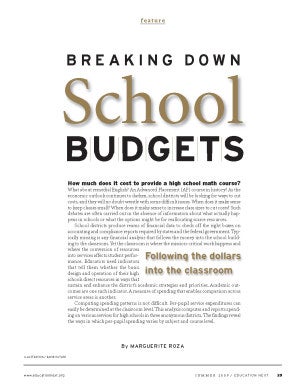
This analysis examines ways in which per-pupil spending in high schools varies by subject and course level, and demonstrates how isolating spending on discrete services can have a variety of benefits.
Now is a Great Time to Compute the Per-Unit Cost of Everything in Education
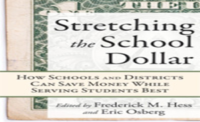
This paper examines how calculating the per unit costs of what schools or districts can deliver can provide the best insight into the implications of all that spending.
How Districts Shortchange Low-Income and Minority Students
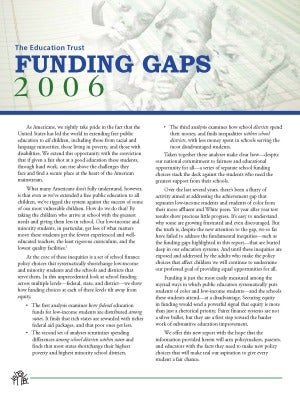
Dr. Roza’s analysis demonstrates that, despite district bookkeeping practices that make funding across schools within the same district appear relatively comparable, substantially less money is spent in high-poverty and high-minority schools.

